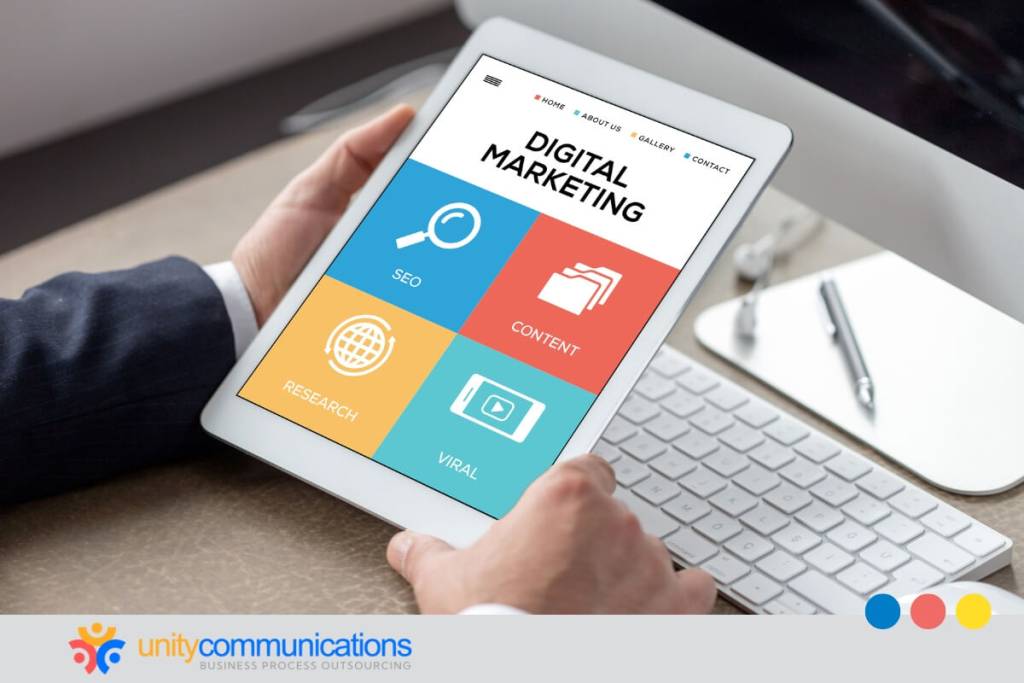Table of Contents
Digital marketing has reshaped how you engage with customers, offering global reach and real-time information for your e-commerce business. However, traditional marketing still plays a vital role in building brand awareness and fostering local connections.
Explore how digital and traditional methods complement each other and their strengths and limitations to help you choose the better approach. Continue reading to learn how outsourcing digital marketing services can optimize your e-commerce strategies.
Defining and differentiating digital and traditional marketing
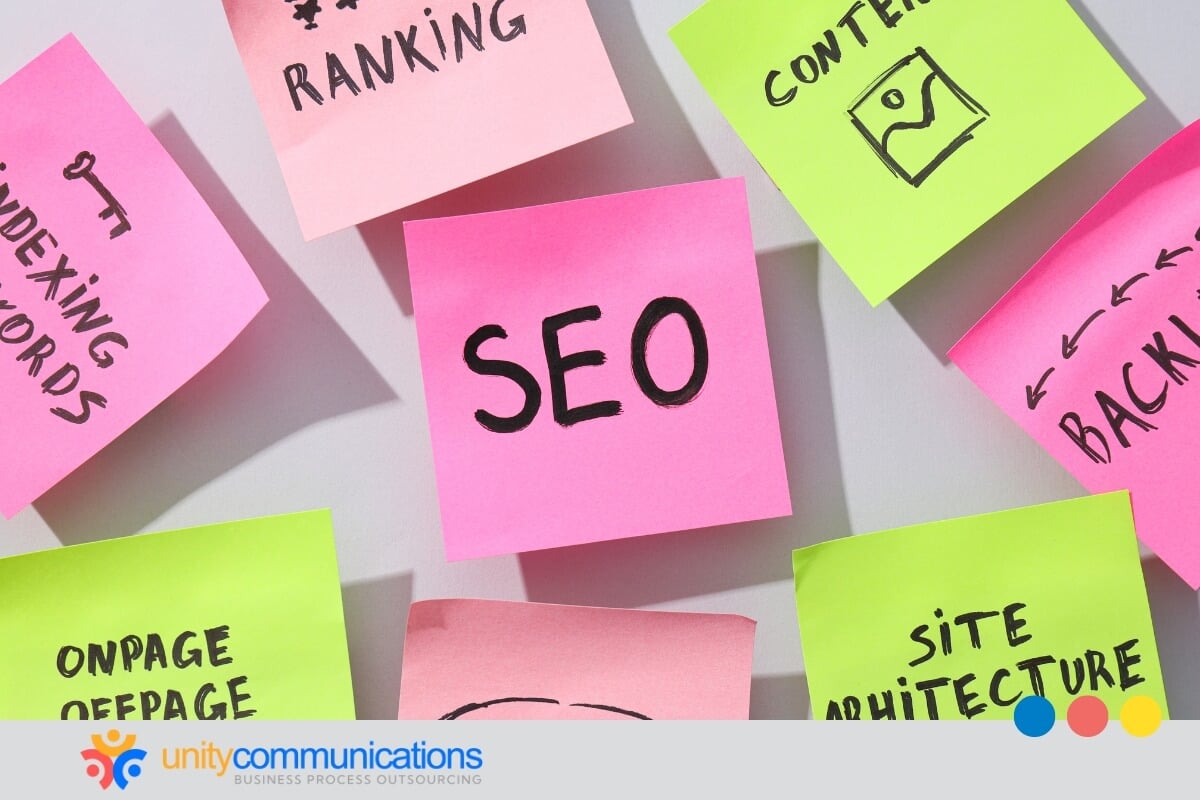
Knowing the distinction between digital and traditional marketing offers the framework for evaluating their impact on retail and e-commerce. These two strategies seek to connect brands with audiences but vary in approaches, channels, and measurable results. The following are the primary differences to consider.
Digital Marketing
On the one hand, digital marketing leverages online platforms to attract and engage customers in real time, aligning with e-commerce requirements. It leverages data and provides exact audience targeting.
The essential elements include:
- Social media advertising builds brand awareness mainly through Facebook and Instagram.
- Search engine optimization (SEO) improves search result visibility to drive organic traffic.
- Email campaigns personalize promotions for repeat purchases.
- Pay-per-click (PPC) ads produce quick traffic and measurable conversions.
Traditional Marketing
On the other hand, traditional marketing depends on offline channels, delivering broad exposure but less audience customization. This can limit relevance for e-commerce businesses.
Key mediums include:
- Print advertising, such as newspapers and magazines, covers different demographics, catering to hybrid businesses.
- Television and radio ads generate mass awareness but lack precise tracking.
- Billboards capture attention in high-traffic areas and increase brand presence without engagement.
Advantages of digital marketing for e-commerce
Digital marketing offers several benefits and opportunities for your e-commerce firm, making it a vital part of your online strategy. Unlike traditional methods, this provides affordable advertising, real-time analytics, and expanded reach to optimize internet sales.
Affordable advertising
Digital marketing is cost-effective compared to conventional advertising, letting you tap into a broader audience without spending a fortune. Key advantages include:
- Social media ads: Highly targeted campaigns are based on interests and demographics.
- PPC: It focuses spending on users who are likely to convert.
Real-time analytics
Digital marketing delivers real-time feedback on campaign effectiveness, allowing you to make quick adjustments to improve results. Some benefits include:
- Tracking engagement: Monitoring click-through rates (CTRs), impressions, and consumer engagement can determine campaign efficacy.
- Optimizing strategies: Data-driven insights can assist in improving ad text, audience targeting, and content.
Expanded reach
Your company can reach worldwide audiences digitally, reducing regional obstacles to e-commerce growth. The perks include:
- SEO improves search engine ranks and attracts organic traffic worldwide.
- Email campaigns personalize messaging for specific customer segments to encourage recurring purchases.
Limitations of traditional marketing in the e-commerce landscape

Traditional marketing still holds value in many industries, but unlike digital marketing, this falls short in the dynamic world of online promotions and e-commerce. It might be effective for mass awareness. However, it fails to address unique needs such as precise targeting, real-time measurable results, and interactivity.
Restricted targeting capabilities
Print or TV commercials cover broad audiences but lack accuracy in targeting specific customer segments. Some drawbacks include:
- Broad reach, low precision: It cannot target specific demographics.
- High cost: Getting the right audience typically demands expensive ad placements.
Lack of measurable results
Conventional methods do not provide immediate feedback on performance. The challenges include:
- No real-time metrics: Difficulty tracking consumer engagement or campaign effectiveness is difficult.
- Hard to adjust: Campaigns are often fixed (with little flexibility) once launched.
Limited interactivity
Traditional strategies do not offer a high engagement level. A few shortcomings include:
- No direct interaction: Personal engagement with potential customers is complex.
- Less personalization: Tailoring messages to individual consumer needs is challenging.
Measuring ROI: Digital vs. traditional marketing in e-commerce
Return on investment (ROI) helps evaluate the effectiveness of your marketing strategies. Digital and conventional marketing differ in their ability to monitor performance, maximize efforts, and deliver measurable results.
Digital marketing: Transparent and data-driven
Digital marketing provides real-time insights and detailed performance metrics, making it ideal for e-commerce businesses that want to allocate resources effectively. Its features include:
- Precise tracking: Google Analytics and related tools offer visibility into website traffic, CTRs, and conversion paths.
- Cost analysis: Platforms, including Facebook Ads Manager and Google Ads, decrease spending per acquisition or click.
- Immediate adjustments: Campaigns can be refined quickly to enhance performance.
Traditional marketing: Limited metrics and delayed feedback
Traditional methods cannot often directly measure their impact, making ROI analysis more challenging. Their limitations include:
- Broad estimations: Metrics rely on generalized data, such as television viewership ratings or circulation figures.
- Delayed results: Campaign outcomes are evaluated long after execution, hindering responsiveness and adaptability.
- Higher costs, lower precision: Traditional channels often demand significant investment without granular tracking of individual customer actions.
Consumer behavior: Online shopping trends and marketing impact
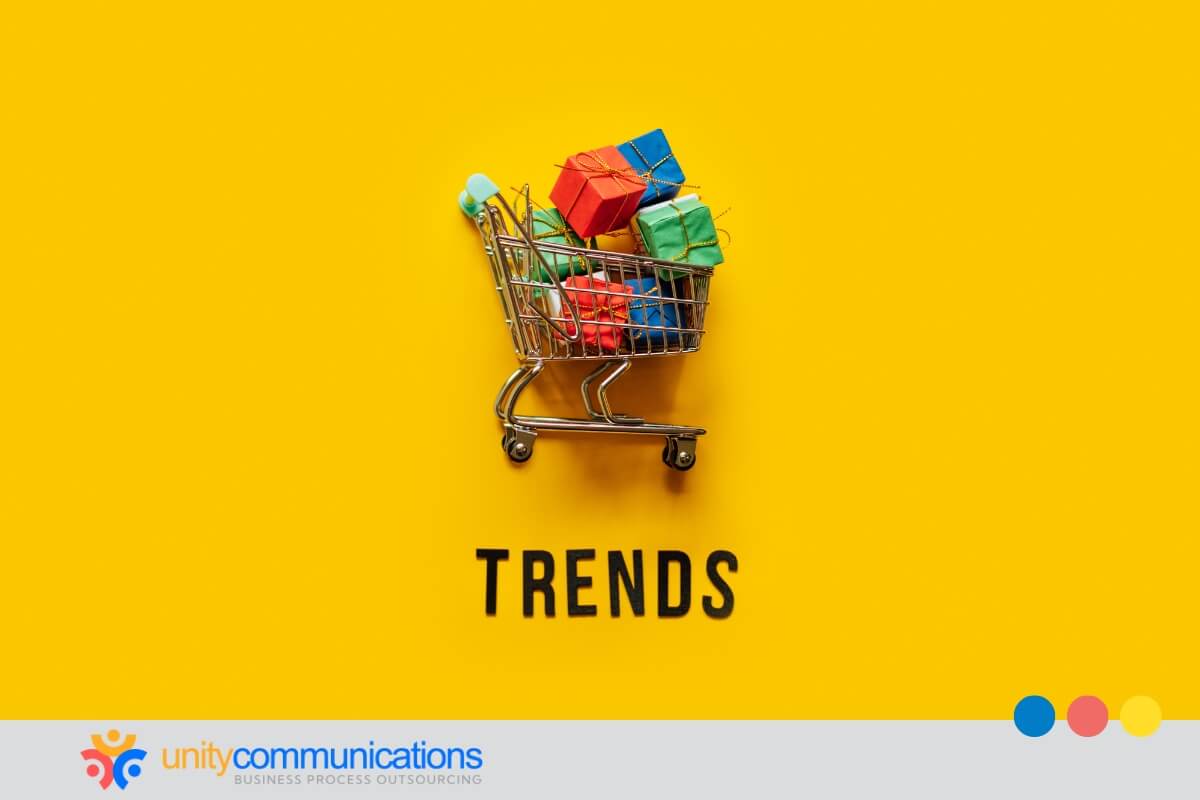
Understanding consumer behavior is vital to online success, guiding digital and traditional marketing strategies to match shifting trends and e-commerce habits. Adapting to changes helps your business stand out, capture attention, and build loyalty in a competitive market.
Key online shopping trends
Modern consumers prioritize convenience, personalization, and seamless experiences. These preferences influence their interactions with e-commerce platforms. Some key trends include:
- Mobile shopping growth: Consumers prefer mobile devices for purchasing, prompting businesses to optimize platforms for smaller screens.
- Social commerce: Social platforms emerge as primary sales channels, combining social interactions with shopping opportunities.
- Subscription models: Many shoppers prefer recurring deliveries, opting for long-term retention over one-time sales.
Marketing impact of changing behaviors
The following trends affect how companies tailor their marketing initiatives to address consumer expectations.
- Personalization in marketing: Data-driven tools help you tailor content, product recommendations, and email campaigns to individual tastes.
- Focus on speed and convenience: One-click purchasing and fast shipping enhance customer experience.
- Interactive content: Engaging formats, including live shopping, videos, and augmented reality (AR) experiences, drive consumer engagement and conversions.
Future trends: The evolution of marketing in e-commerce
The e-commerce marketing landscape constantly changes, fueled by technical improvements and shifting customer expectations. As these changes occur, your firm must adapt to stay with evolving trends that affect strategy and profitability.
Emerging marketing trends
The future trends in e-commerce marketing include:
- Artificial intelligence (AI) and machine learning (ML): These technologies help you provide a personalized experience to improve customer journeys.
- Voice search optimization: As voice-activated devices rise, businesses focus on voice search to match consumer shopping and search behaviors.
- Influencer marketing expansion: As social media dominates, more brands work with influencers to build trust, connect with niche audiences, and boost conversions.
The shift toward sustainability
Online businesses increasingly emphasize sustainability as consumers demand more eco-friendly practices. Digital marketing and e-commerce adapt by prioritizing sustainable strategies and promoting environmental responsibility across all consumer touchpoints.
- Eco-friendly products: Brands offer sustainable goods to meet consumer expectations for environmentally responsible shopping.
- Carbon-neutral shipping: Green delivery options reflect growing environmental concerns.
- Sustainable packaging: Brands use eco-friendly packaging solutions to reduce waste and attract environmentally-conscious consumers.
Crafting the optimal marketing mix for e-commerce
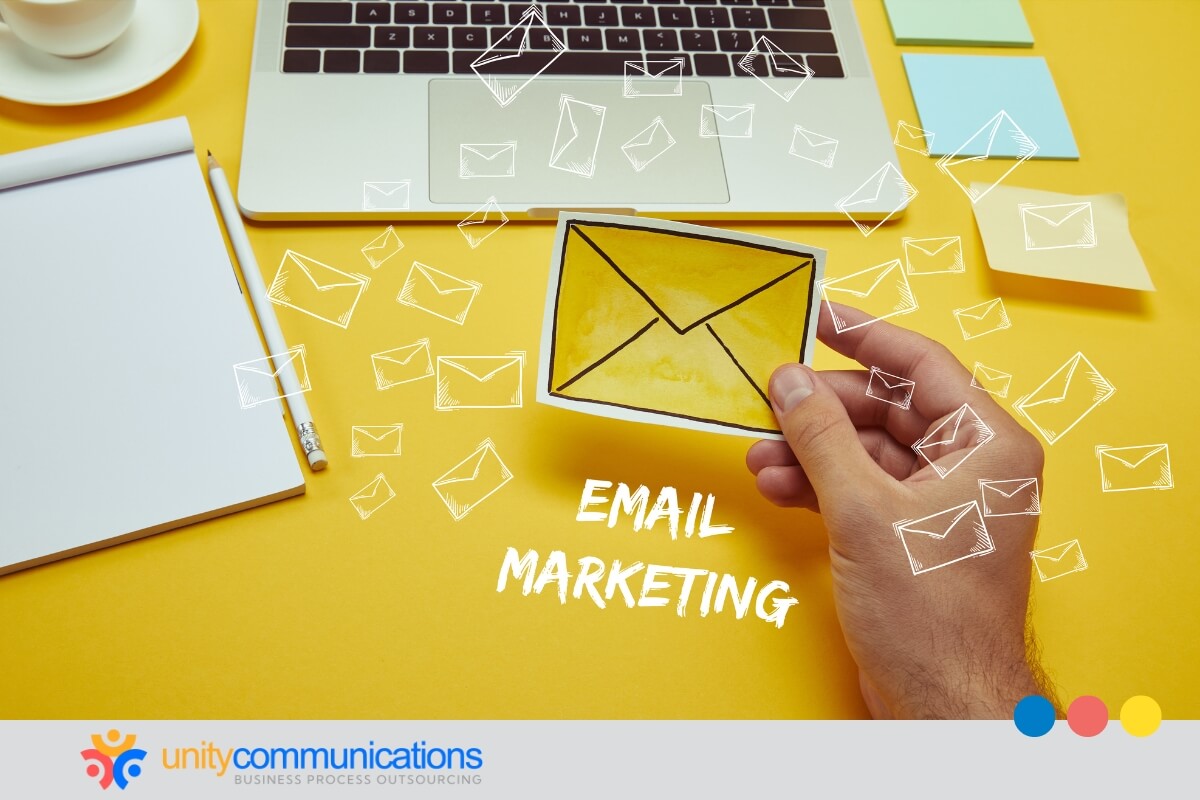
To stay competitive in e-commerce, your business needs a potent marketing mix incorporating digital and traditional strategies. This approach helps reach a broader audience while staying relevant.
Here’s how to combine digital marketing and e-commerce with traditional methods for maximum effect:
- Digital advertisements and print media: To increase local reach, use internet ads to generate rapid traffic and blend them with traditional print media, such as flyers or newspapers. This makes your product or service noticeable online and offline.
- Social media and TV marketing: Integrate social media methods with radio or television commercials to build a multi-channel strategy that heightens brand awareness across several platforms.
- Email marketing and direct mail: Email campaigns are ideal for focused promotions and offers, while traditional direct mail can be utilized for high-touch, personalized engagement with repeat customers.
- Content marketing and conventions: Traditional events such as trade exhibitions or in-store promotions can boost blogs and videos to engage audiences in person and online.
- Search engine marketing and outdoor advertising: Pair search engine ads with billboards to drive traffic and local awareness.
Outsourcing to optimize marketing strategies for e-commerce
Business process outsourcing (BPO) is an effective way to optimize digital and traditional marketing strategies. What is BPO? This approach leverages external expertise and resources so your e-commerce business can maximize its reach at a fraction of the cost.
How outsourcing works for digital marketing involves delegating social media management, email campaigns, content creation, and SEO tasks to a BPO provider. You can also outsource print advertising, TV commercials, and direct mail campaigns to a specialized agency. This frees up internal resources while benefiting from the provider’s experience and scalability.
The primary advantages of outsourcing digital marketing management and traditional marketing include the following:
- Cost efficiency: Outsourcing removes the need for in-house recruiting and training, lowering overhead expenses.
- Access to expertise: Service providers provide in-depth knowledge, broad experience, and industry insights, optimizing your marketing efforts.
- Flexibility: As your e-commerce business grows, outsourcing allows you to scale marketing efforts without expanding your team.
- Time savings: Outsourcing in digital marketing and traditional advertising allows you to rely on experts so your internal team can focus on other critical areas.
The bottom line
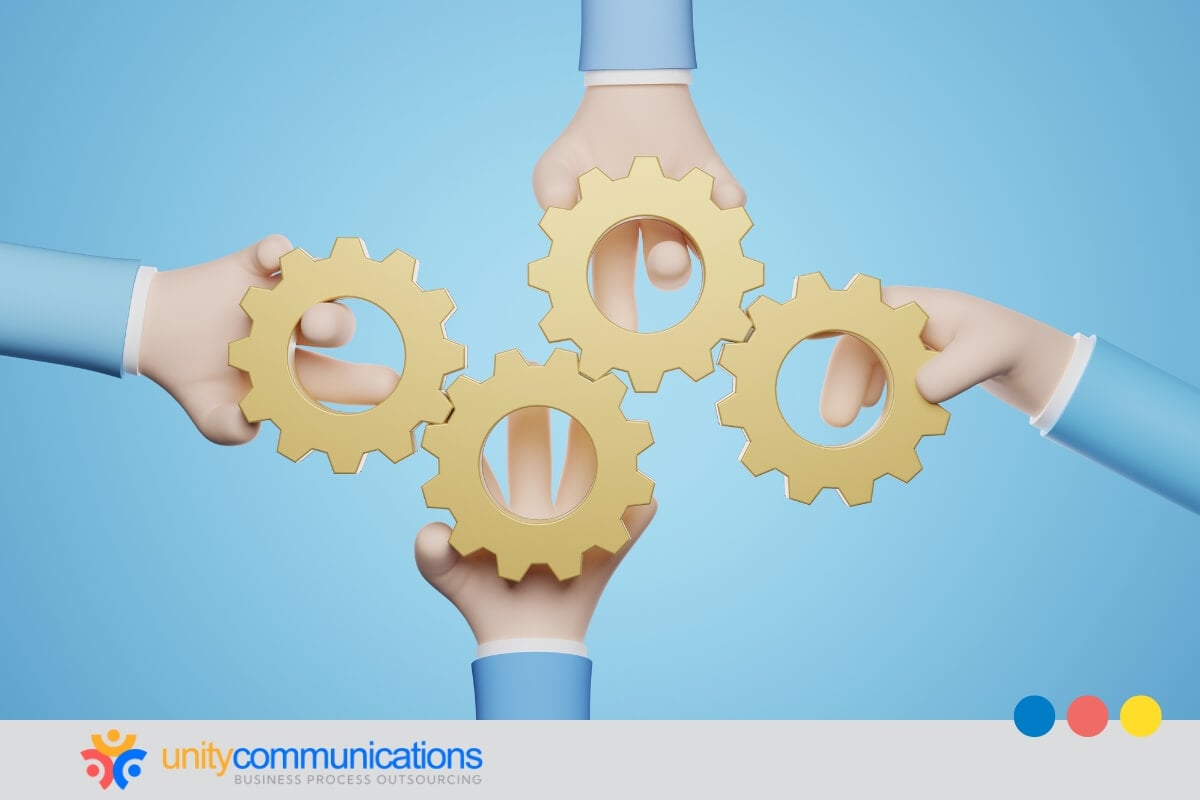
A balanced strategy produces the best results. Digital marketing offers precision targeting, real-time analytics, and worldwide reach for e-commerce, whereas traditional marketing increases brand visibility and engagement in local markets. Combining both tactics strengthens your business and drives success across channels.
Are you ready to elevate your marketing strategy? Let’s connect and discuss how we can maximize your marketing impact.

